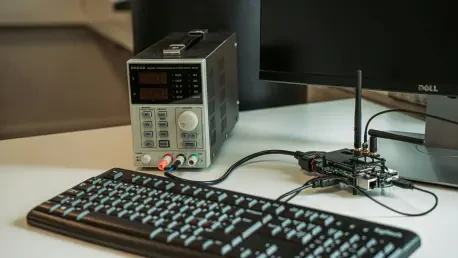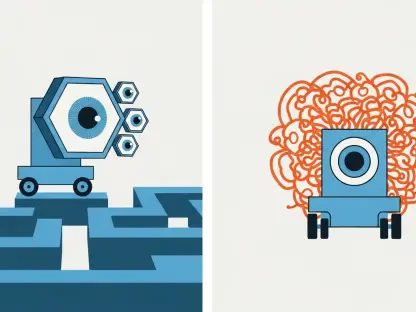Setting the Stage for AI Disruption
In an era where artificial intelligence is pushing boundaries across industries, a staggering reality looms: the computational cost of scaling AI models for long-context tasks is becoming unsustainable, threatening progress. Traditional transformer architectures, the backbone of modern language models, struggle with quadratic scaling issues, making processing vast datasets or extended interactions prohibitively expensive. Enter Manifest AI’s latest release on October 28, a game-changer named Brumby-14B-Base, a 14-billion-parameter model that ditches the attention mechanism for a novel approach called Power Retention. This market analysis delves into how this innovation is poised to reshape AI development, examining current trends, economic impacts, and future projections. The significance lies not just in technical prowess but in the potential to democratize access to cutting-edge AI tools, challenging the dominance of resource-heavy giants.
Diving into Market Trends and Technological Shifts
Unpacking the Transformer Bottleneck
The AI market has been dominated by transformer models since their inception nearly a decade ago, powering everything from chatbots to automated content generation. However, a critical pain point persists: the attention mechanism, while effective in weighing input relevance, scales poorly with sequence length, leading to skyrocketing memory and computational demands. Industry data indicates that processing long documents or continuous streams often doubles costs with each incremental increase in context size. This inefficiency has created a niche for alternative architectures, with Brumby-14B-Base stepping in as a frontrunner. Its focus on linear complexity through Power Retention signals a pivotal shift, addressing a market need for scalable solutions in sectors like legal tech and real-time analytics, where extended data processing is paramount.
Power Retention as a Market Differentiator
Brumby-14B-Base introduces Power Retention, a recurrent mechanism that maintains a fixed-size memory matrix, updated at each step, achieving constant-time computation per token. This stands in stark contrast to the quadratic growth of attention-based systems, offering a lifeline for applications requiring long-context reasoning, such as complex problem-solving in STEM fields. Market analysis reveals that early benchmarks position Brumby as competitive with top transformer models like Qwen3-14B in tasks like mathematical reasoning, though it trails slightly in knowledge-intensive areas. For businesses, this suggests a targeted value proposition: efficiency in niche, high-context applications could outweigh broad-spectrum performance, potentially carving out a significant market share in specialized AI services by 2027.
Economic Ripple Effects of Cost Efficiency
One of the most striking market impacts of Brumby-14B-Base is its training cost, slashed to a mere $4,000 over 60 hours using 32 Nvidia #00 GPUs. By retraining from existing open-source weights, Manifest AI has demonstrated a cost-effective blueprint for innovation, a move that could lower entry barriers for smaller players in the AI space. Projections estimate that scaling this approach to 700-billion-parameter models might cost between $10,000 and $20,000, a fraction of current industry standards. This economic advantage is already stirring interest among startups and mid-tier firms, potentially fragmenting a market long dominated by tech giants. However, skepticism around real-world applicability tempers enthusiasm, as production-scale validation remains a critical hurdle for widespread adoption.
Hardware and Performance Dynamics
Inference Speed as a Competitive Edge
Beyond training economics, Brumby-14B-Base offers substantial gains in inference efficiency, a key driver in the AI hardware market. Custom CUDA kernels developed through Manifest AI’s Vidrial framework achieve utilization rates of 80–85%, outpacing alternatives like FlashAttention2. Reports of speedups up to 100 times for very long sequences highlight a transformative potential for real-time processing applications, from financial modeling to live transcription services. As hardware manufacturers race to optimize for AI workloads, such efficiency could influence GPU design trends over the next few years, pushing toward architectures that prioritize linear scaling. Yet, market analysts caution that these gains need broader testing to confirm consistency across diverse workloads.
Balancing Performance Trade-offs
While efficiency grabs headlines, performance nuances shape market perceptions of Brumby. The model matches transformer benchmarks in reasoning-heavy tasks, making it a viable option for industries reliant on logical analysis over raw data recall. However, its slight lag in knowledge-intensive evaluations raises questions about versatility, potentially limiting appeal in sectors like education or content creation where factual accuracy reigns supreme. Market forecasts suggest that hybrid models, blending retention and attention mechanisms, might emerge as a sweet spot by 2026, catering to a wider array of use cases. For now, early adopters in niche markets stand to gain the most, leveraging Brumby’s strengths while competitors catch up.
Future Projections and Industry Implications
Architectural Diversity on the Horizon
Looking ahead, the AI market appears ripe for a diversification of architectures, with Brumby-14B-Base leading the charge against transformer monoculture. Emerging frameworks like state-space models complement this trend, reflecting a growing consensus that no single architecture fits all needs. Projections indicate that by 2027, retention-based models could capture up to 15% of the AI processing market, particularly in long-context applications. Regulatory pressures around data usage and energy consumption will likely shape adoption rates, but the push for efficiency aligns with broader sustainability goals. Investors are already eyeing startups that pivot toward such innovations, signaling a shift in capital allocation over the coming years.
Accessibility and Market Democratization
The low cost of retraining models like Brumby hints at a democratization of AI research, a trend that could redefine competitive dynamics. Smaller organizations, previously priced out of foundational model development, may now experiment with cutting-edge technology, fostering innovation in underserved verticals like regional language processing. Market analysis points to a potential surge in customized AI solutions tailored to specific industries, challenging the one-size-fits-all approach of larger players. However, disparities in computational access across regions could skew benefits toward well-resourced markets, a factor that policymakers and industry leaders must address to ensure equitable growth.
Reflecting on a Transformative Milestone
The emergence of Brumby-14B-Base marks a significant turning point in the AI landscape, spotlighting the limitations of traditional transformer models while showcasing the promise of Power Retention. Its impact reverberates through economic models, hardware strategies, and performance expectations, setting a precedent for efficiency-driven innovation. As the industry absorbs these developments, strategic imperatives emerge: businesses need to pilot retention-based models in high-context scenarios, balancing cost savings with performance needs. Developers are encouraged to explore frameworks like Vidrial for optimized inference, while investors must weigh the potential of architectural diversity against proven transformer dominance. Ultimately, this moment underscores the necessity of adaptability, urging stakeholders to embrace experimentation and collaboration to navigate an evolving market poised for profound change.









